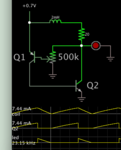parsiva
Junior Member level 3

Hello
I am working on booster converter project
and i chose my switching device MOSFET IRFZ44N
My input is 2-3V and i want the desired output as 10-15V
Will my MOSFET turn on for this input
will my circuit work??
please help me out
Thank you.
I am working on booster converter project
and i chose my switching device MOSFET IRFZ44N
My input is 2-3V and i want the desired output as 10-15V
Will my MOSFET turn on for this input
will my circuit work??
please help me out
Thank you.


